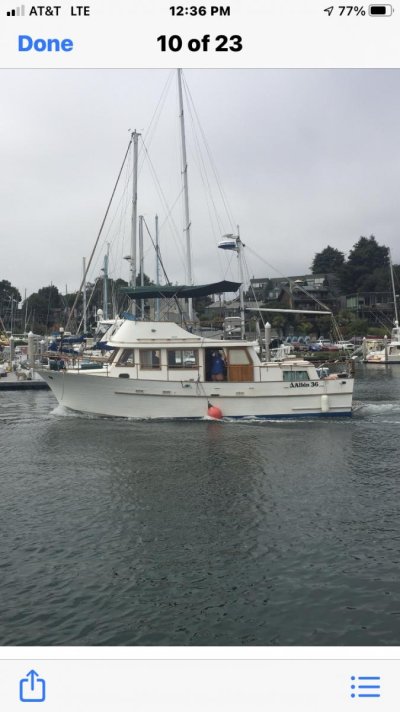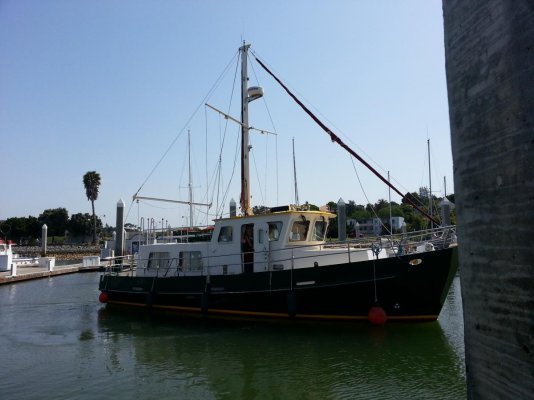Delfini
Member
1980 Albin 36’ single engine with 4 kw gen forward of the engine
Fuel tanks each side 300 gallons water in stern laz.
Even with empty fuel and water tanks full bowsits 6” low.
100’ 3/8” chain in bow
I can only conclude it was built that way but am not willing to accept that conclusion just yet.
Any other bow heavy have a take on this one?
Fuel tanks each side 300 gallons water in stern laz.
Even with empty fuel and water tanks full bowsits 6” low.
100’ 3/8” chain in bow
I can only conclude it was built that way but am not willing to accept that conclusion just yet.
Any other bow heavy have a take on this one?



